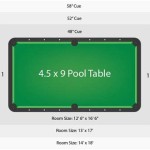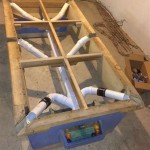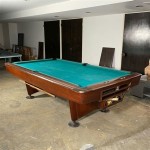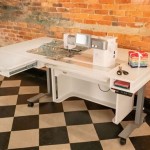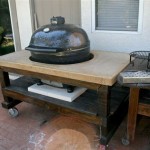How To Clean Old Marble Table Top
Marble tabletops, prized for their elegance and durability, can accumulate dirt, stains, and scratches over time, especially with age. Proper cleaning is crucial to maintain the integrity and beauty of these surfaces. This article provides a comprehensive guide to safely and effectively clean old marble tabletops, addressing common issues and offering preventative measures.
Identifying the Marble Type and Condition
Before commencing any cleaning process, it is essential to identify the type of marble and assess its condition. Marble varies in porosity and composition, affecting its reaction to different cleaning agents. A visual inspection should be conducted to determine the presence of stains, scratches, chips, or etch marks. Etch marks appear as dull spots caused by acidic substances reacting with the calcium carbonate in the marble.
Testing the marble's reaction to cleaning solutions in an inconspicuous area is highly recommended. This step helps prevent unintended damage or discoloration. Apply a small amount of the chosen cleaner to a hidden corner of the tabletop and observe for any adverse effects within a few minutes. If no negative reaction is observed, it is generally safe to proceed with cleaning the entire surface.
The age of the marble tabletop also plays a critical role. Older marble may have pre-existing repairs or sealants that could be affected by certain cleaning methods. A careful examination will reveal any unstable areas needing special attention or potentially needing professional restoration.
Gathering the Necessary Cleaning Supplies
To effectively clean an old marble tabletop, specific supplies are required. Using the correct tools and products minimizes the risk of damage and ensures optimal results. The essential cleaning supplies include:
- Soft, non-abrasive cloths: Microfiber cloths are ideal for gentle cleaning and buffing.
- Warm water: This is the primary cleaning agent for most routine cleaning tasks.
- pH-neutral cleaner: Specially formulated for marble, avoiding acidic or alkaline chemicals.
- Baking soda: A mild abrasive for tackling stubborn stains.
- Hydrogen peroxide: For treating organic stains, such as coffee or tea.
- Distilled water: For rinsing and preventing water spots.
- Soft-bristled brush: Useful for cleaning crevices and textured surfaces.
- Marble polish: Enhances the shine and protects the surface.
- Sealer (optional): Provides an extra layer of protection against stains.
Avoid using abrasive cleaners, scouring pads, or acidic solutions like vinegar, lemon juice, or ammonia. These substances can etch and dull the marble surface, causing irreversible damage.
Step-by-Step Cleaning Process
The cleaning approach for an old marble tabletop should be methodical, starting with the least aggressive methods and progressing as needed. This minimizes the risk of damaging the delicate surface. Follow these steps for effective and safe cleaning:
- Dust Removal: Begin by removing any loose dust or debris from the tabletop using a soft, dry cloth or a duster. This prevents scratching during the subsequent cleaning steps.
- Warm Water Cleaning: Dampen a clean microfiber cloth with warm water and gently wipe the entire surface of the marble tabletop. This removes surface dirt and grime. Rinse the cloth frequently and wring out excess water to avoid water spots.
- pH-Neutral Cleaner Application: If warm water alone is insufficient, use a pH-neutral marble cleaner. Dilute the cleaner according to the manufacturer's instructions. Apply the solution to a clean microfiber cloth and wipe the tabletop. Avoid applying the cleaner directly to the marble surface, as this can cause uneven cleaning or staining.
- Stain Removal: For stains, identify the type of stain and use appropriate methods for its removal.
- Organic Stains (Coffee, Tea, Wine): Mix a paste of hydrogen peroxide and a small amount of baking soda. Apply the paste to the stain, cover it with plastic wrap, and let it sit for several hours or overnight. Gently wipe away the paste with a damp cloth and rinse the area thoroughly with distilled water.
- Oil-Based Stains (Grease, Oil): Mix a paste of baking soda and water. Apply the paste to the stain, cover it with plastic wrap, and let it sit for several hours. Wipe away the paste with a damp cloth and rinse the area thoroughly with distilled water.
- Rust Stains: These are particularly difficult to remove and may require professional assistance. Avoid using rust removers containing harsh acids, as they can severely damage the marble. A poultice made of diatomaceous earth and a rust stain remover specifically designed for marble might work, but proceed with caution and test in an inconspicuous area first.
- Rinsing and Drying: After cleaning with any solution, thoroughly rinse the tabletop with distilled water to remove any residue. Use a clean, dry microfiber cloth to dry the surface completely. This prevents water spots and helps maintain the shine.
- Polishing (Optional): To enhance the shine of the marble, apply a marble polish according to the manufacturer's instructions. Use a clean microfiber cloth to buff the surface until it gleams.
- Sealing (Optional): Applying a marble sealer can provide an extra layer of protection against future stains. Choose a high-quality sealer specifically designed for marble and follow the application instructions carefully.
Addressing Specific Issues: Scratches and Etch Marks
Marble tabletops are susceptible to scratches and etch marks, which can detract from their appearance. While deep scratches and severe etch marks often require professional restoration, minor imperfections can be addressed with careful cleaning and polishing techniques.
Minor Scratches: For superficial scratches, a marble polishing compound can be used. Apply a small amount of the compound to a soft cloth and gently rub it onto the scratched area in a circular motion. Continue polishing until the scratch is less noticeable. Buff the area with a clean cloth to restore the shine.
Etch Marks: Etch marks are caused by acidic substances that have reacted with the calcium carbonate in the marble. These marks appear as dull spots. A marble polishing compound can also be used to address minor etch marks. Follow the same procedure as for minor scratches, applying the compound to the affected area and buffing it until the etch mark is reduced. For more severe etch marks, professional honing and polishing may be necessary.
Deep Scratches or Chips: Deep scratches or chips are difficult to repair without professional assistance. Attempting to repair these imperfections yourself can potentially cause further damage. Consult a qualified marble restoration specialist for advice and treatment options.
Preventative Measures for Maintaining Marble Tabletops
Preventing stains and damage is crucial for maintaining the beauty and longevity of old marble tabletops. Implementing proactive measures can significantly reduce the need for intensive cleaning and restoration.
Use Coasters and Placemats: Always use coasters under glasses and mugs to prevent rings and stains from liquids. Placemats should be used under plates and serving dishes to protect the marble from food spills and scratches.
Clean Spills Immediately: Wipe up spills immediately with a clean, damp cloth. The longer a spill sits on the marble surface, the greater the chance of staining. Pay particular attention to acidic substances like vinegar, lemon juice, and tomato sauce.
Avoid Abrasive Cleaners and Tools: Never use abrasive cleaners, scouring pads, or steel wool on marble tabletops. These materials can scratch the surface and dull the shine. Only use soft cloths and pH-neutral cleaners specifically designed for marble.
Regular Dusting: Regularly dust the tabletop with a soft cloth or duster to remove loose dirt and debris. This prevents scratching and helps maintain the clean appearance of the marble.
Consider a Protective Sealant: Applying a marble sealant can provide an extra layer of protection against stains and spills. Choose a high-quality sealant and follow the application instructions carefully. Reapply the sealant periodically as recommended by the manufacturer.
Professional Maintenance: Schedule regular professional cleaning and maintenance for your marble tabletop. A qualified marble restoration specialist can provide expert cleaning, polishing, and sealing services to keep your tabletop looking its best.
By following these guidelines, you can effectively clean and maintain your old marble tabletop, preserving its beauty and elegance for years to come. Careful attention to detail and the use of appropriate cleaning methods are essential for protecting this valuable surface.

The Pros Cons Of Marble Countertops What I Use To Clean Mine Zdesign At Home

How To Remove Stains And Water Marks From Marble Countertops Brownstone Cyclone

How To Clean A Marble Table Pro Housekeepers

How To Clean Marble Countertops Easiest Way Stone Wizards

The Pros Cons Of Marble Countertops What I Use To Clean Mine Zdesign At Home

Restoring Our Marble Counters Honey We Re Home

How To Remove Marble Rust Stains Imperia Deep Clean

How To Remove Stains And Water Marks From Marble Countertops Brownstone Cyclone

How To Clean A Marble Table Pro Housekeepers

How To Clean And Maintain Marble Countertops
Related Posts

